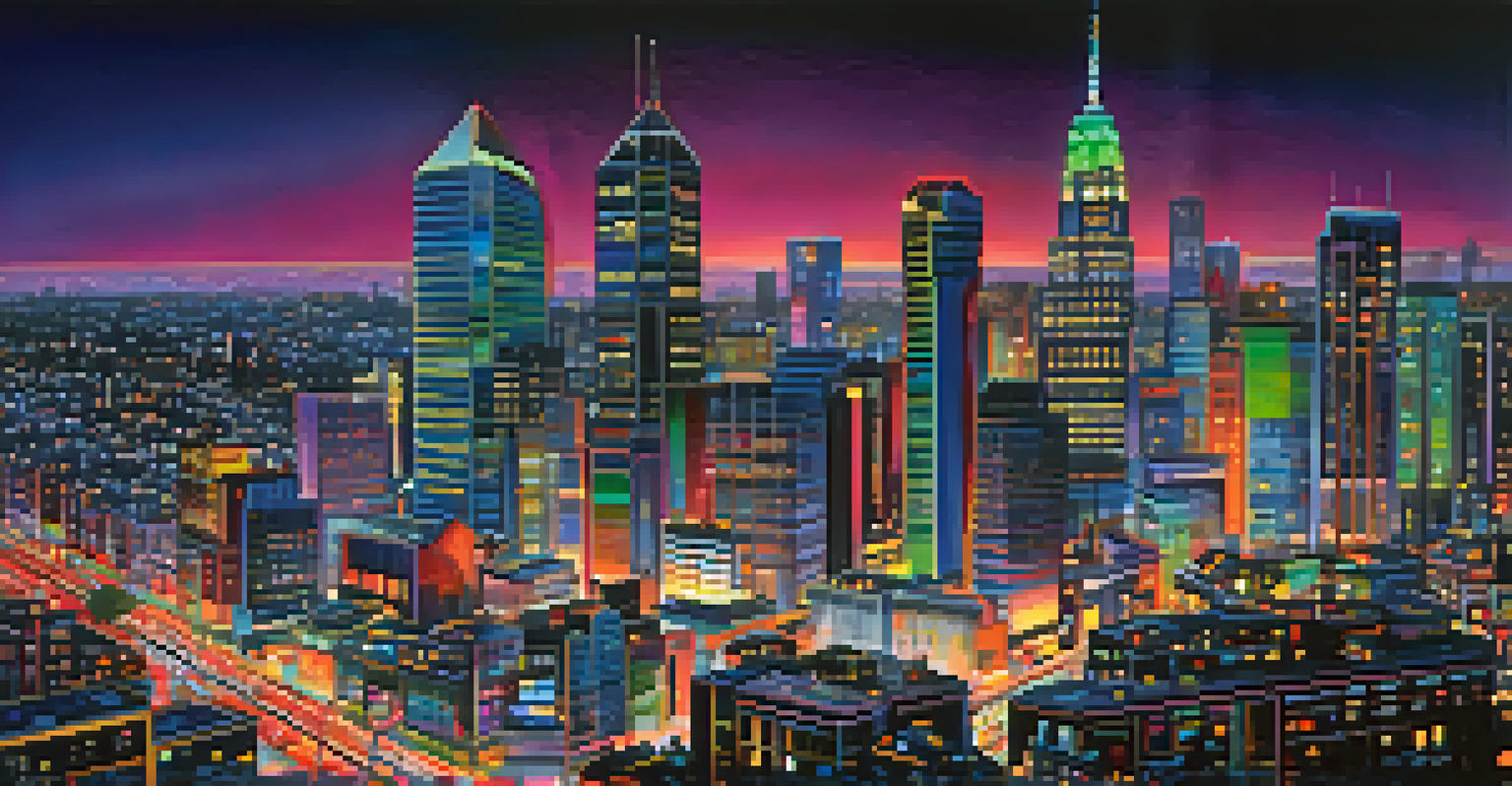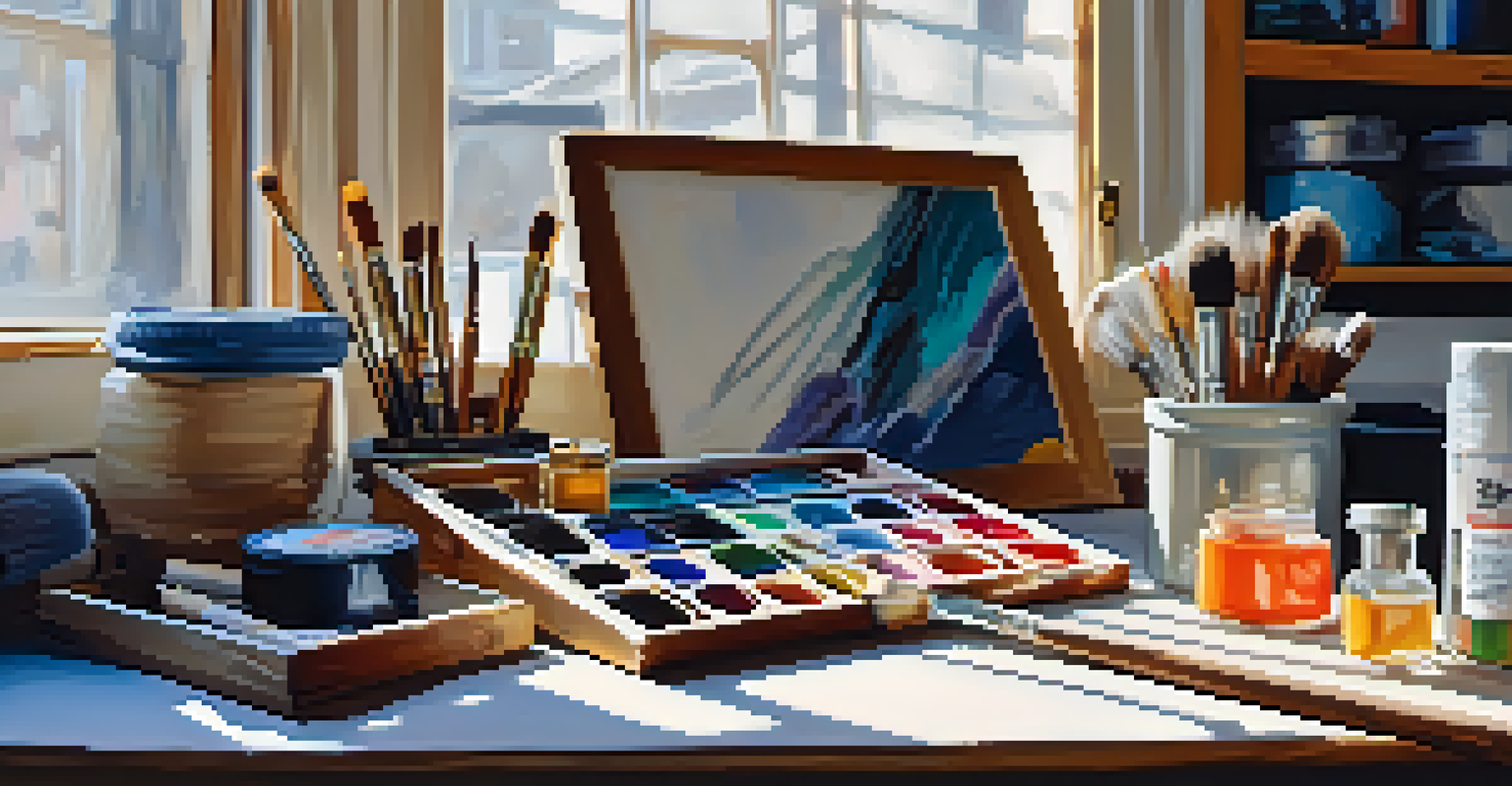Art and Technology: Ethical Challenges in Digital Creation

The Intersection of Art and Technology: An Overview
In recent years, technology has transformed the art world, creating exciting new possibilities for artists. Digital tools, software, and platforms have made it easier to create and share art, but this fusion also raises important ethical questions. As we embrace these innovations, it's crucial to consider how they influence the authenticity, ownership, and value of art.
Art is not a thing; it is a way.
For instance, digital art can be replicated and shared instantly, which complicates traditional notions of originality. Artists must grapple with whether their work retains the same value when it can be easily duplicated. This creates a complex landscape where the definition of art continues to evolve, pushing boundaries and challenging norms.
Ultimately, understanding the intersection of art and technology means recognizing both the opportunities and the ethical challenges that arise. As we explore this dynamic relationship, we must remain mindful of the implications for artists, consumers, and the art community as a whole.
Copyright and Ownership in the Digital Age
Copyright is a fundamental issue in the realm of digital art. With the rise of online platforms, the question of who owns a piece of digital artwork becomes increasingly complex. Many artists fear their work may be used without permission or recognition, leading to a loss of income and control over their creations.

Additionally, the ease of sharing and reproducing digital art can blur the lines of ownership. For example, an artist might create an original piece, but it can quickly find its way onto social media, often without proper attribution. This raises important questions about how to protect intellectual property in a digital landscape that encourages sharing.
Art's Value in Digital Duplication
The rise of digital art challenges traditional notions of originality and ownership, as easy replication complicates the value of creative works.
As technology continues to evolve, so too must our understanding of copyright and ownership. It’s essential for artists to educate themselves about their rights and for platforms to implement policies that respect and protect creators’ work.
The Role of Artificial Intelligence in Art Creation
Artificial intelligence (AI) is reshaping the landscape of art creation. From generating images to composing music, AI tools can produce works that challenge our perceptions of creativity. However, this raises ethical questions about the role of the artist and the originality of the work produced by algorithms.
The greatest artists are not those who create, but those who inspire.
For instance, if an AI creates a stunning piece of art, who gets the credit? Is it the programmer who designed the AI, the user who prompted it, or the AI itself? These questions highlight the need for a clear framework around the use of AI in creative processes, ensuring that human artists are not sidelined.
As we explore the intersection of AI and art, it's crucial to navigate these ethical dilemmas thoughtfully. Recognizing the potential of AI while also upholding the value of human creativity is essential for the future of digital art.
Cultural Appropriation and Digital Art
Cultural appropriation is a significant concern in the digital art world, especially as artists draw inspiration from diverse cultures. When a digital artist uses elements from a culture that is not their own, it can lead to ethical dilemmas about representation and respect. This issue becomes even more complex in an age of global connectivity, where art and ideas are shared widely across borders.
For example, an artist might create a piece that borrows symbols or styles from an indigenous culture without understanding their significance. This can result in commodification, where sacred or meaningful elements are reduced to mere aesthetic choices. Such actions can perpetuate stereotypes and offend those whose cultures are being represented.
AI's Role in Creative Ethics
The use of artificial intelligence in art creation raises ethical questions about authorship and the role of human artists in the creative process.
To address these concerns, artists should strive for cultural sensitivity and engage in meaningful research and dialogue. Understanding the origins and meanings behind cultural elements can foster respect and collaboration, ultimately enriching the art being created.
The Impact of Social Media on Art Ethics
Social media is a double-edged sword for artists, providing a platform for exposure while also complicating ethical considerations. On one hand, artists can share their work with a global audience, gaining recognition and connecting with fans. On the other hand, the nature of social media can lead to issues like plagiarism and misrepresentation.
For instance, an artist might find their work shared widely without proper credit, leading to frustration and a sense of violation. The fast-paced environment of social media often prioritizes virality over respect for creators, making it essential for artists to advocate for their rights. This can involve watermarking images or engaging with followers about the importance of attribution.
Navigating the ethical landscape of social media requires vigilance and proactive measures. By fostering a culture of respect and accountability, artists can leverage these platforms while protecting their creative contributions.
The Environmental Impact of Digital Art Practices
As the art world increasingly embraces digital practices, we must also consider the environmental implications. The production and consumption of digital art often involve significant energy use, particularly with the rise of blockchain technology and NFTs (non-fungible tokens). This raises ethical questions about sustainability in the art community.
For example, creating and trading NFTs can result in a considerable carbon footprint due to the energy consumption of blockchain networks. Artists who are passionate about environmental issues might find themselves conflicted when engaging with these technologies. It’s essential to weigh the benefits of digital art against its environmental impact.
Cultural Sensitivity in Digital Art
Digital artists must navigate the complexities of cultural appropriation, ensuring respect for the origins and significance of the elements they incorporate.
Artists and consumers alike can advocate for greener practices within the digital art space. By choosing platforms that prioritize sustainability and exploring eco-friendly alternatives, the art community can work towards a more responsible future.
Conclusion: Balancing Innovation and Ethics in Digital Art
The intersection of art and technology opens up exciting avenues for creativity, but it also presents ethical challenges that cannot be overlooked. As we navigate this digital landscape, it’s crucial to engage in conversations about copyright, cultural appropriation, and the impact of AI. By doing so, we can foster an environment that respects and uplifts artists while embracing innovation.
Moreover, as digital artists continue to explore new mediums and platforms, they must remain vigilant about the implications of their work. Understanding the ethical considerations surrounding their creations helps to ensure that art remains a force for good in society.

In the end, balancing innovation with ethical responsibility is key to the future of digital art. By prioritizing these conversations and practices, the art community can thrive in a way that honors both creativity and integrity.